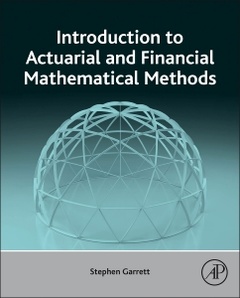Description
Introduction to Actuarial and Financial Mathematical Methods
Author: Garrett Stephen
Language: English
Subjects for Introduction to Actuarial and Financial Mathematical Methods:
624 p. · 19x23.3 cm · Hardback
Description
/li>Contents
/li>Readership
/li>Biography
/li>Comment
/li>
This self-contained module for independent study covers the subjects most often needed by non-mathematics graduates, such as fundamental calculus, linear algebra, probability, and basic numerical methods. The easily-understandable text of Introduction to Actuarial and Mathematical Methods features examples, motivations, and lots of practice from a large number of end-of-chapter questions. For readers with diverse backgrounds entering programs of the Institute and Faculty of Actuaries, the Society of Actuaries, and the CFA Institute, Introduction to Actuarial and Mathematical Methods can provide a consistency of mathematical knowledge from the outset.
1. Mathematical Language
2. Exploring Functions
3. Differential Calculus
4. Differential Calculus II
5. Sequences and Series
6. Integral Calculus I
7. Integral Calculus II
II: Further Calculus
8. Complex Numbers
9. Introductory Linear Algebra
10. Probability Theory
11. Implicit Functions and ODEs
12. Multivariate Calculus
13. Introductory Numerical Methods
III: Worked Solutions to QuestionsIV: Appendices
A. Mathematical Identities
B. Proof of the Chain Rule
C. Long Division in Algebra
- Presents a self-study mathematics refresher course for the first two years of an actuarial program
- Features examples, motivations, and practice problems from a large number of end-of-chapter questions designed to promote independent thinking and the application of mathematical ideas
- Practitioner friendly rather than academic
- Ideal for self-study and as a reference source for readers with diverse backgrounds entering programs of the Institute and Faculty of Actuaries, the Society of Actuaries, and the CFA Institute




